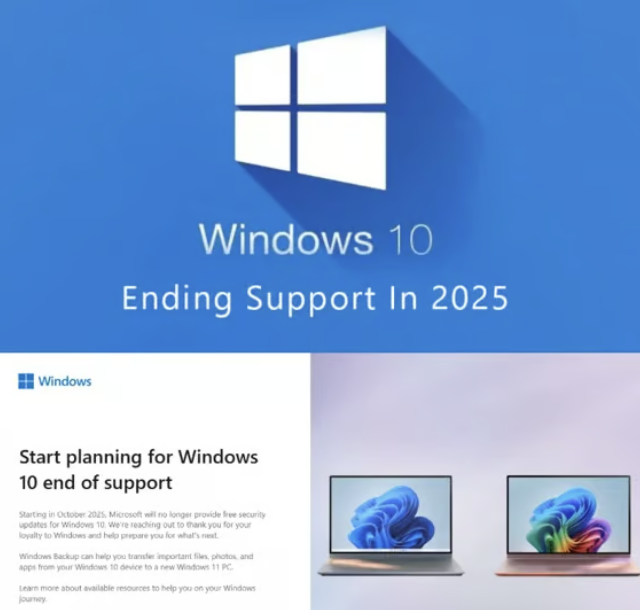
At first glance, sticking with a familiar system might seem like the easy (and cheaper) option. But staying on Windows 10 after support ends could expose your business to significant risks—costing you much more in the long run.
Technology evolves fast—and so do the risks that come with falling behind.
If your business is still operating on Windows 10, it’s important to start planning your move to Windows 11 now.
At first glance, sticking with a familiar system might seem like the easy (and cheaper) option. But staying on Windows 10 after support ends could expose your business to significant risks—costing you much more in the long run.
Here’s seven risks of staying on Windows 10 is a gamble you don’t want to take:
- Security Vulnerabilities Will Skyrocket
Microsoft will officially stop supporting Windows 10 in October 2025. After that, no more security patches or critical updates will be released.
Without regular updates, your PCs will quickly become prime targets for cybercriminals. Ransomware, phishing attacks, and malware threats will become harder—and sometimes impossible—to defend against.
If you’re handling sensitive customer data or financial information, this is a massive risk. One breach could cost thousands (or millions) in damages, lawsuits, and reputational harm.
- Compliance Risks Will Increase
Many industries are governed by strict data protection laws like HIPAA, GDPR, and CCPA. Using unsupported software could mean you’re automatically out of compliance—even if you’re doing everything else right.
Noncompliance can lead to hefty fines, audits, and loss of customer trust. Upgrading to Windows 11 helps ensure your systems stay compliant with current security standards.
- Productivity Will Start to Suffer
Outdated operating systems can drag down performance, cause app compatibility issues, and disrupt workflows.
As more software developers optimize for Windows 11, apps may stop working properly—or not at all—on Windows 10. This means more downtime, frustrated employees, and higher support costs.
Meanwhile, Windows 11 brings major productivity features like Snap Layouts, advanced window management, and tighter cloud integration—all designed to make daily work faster and easier.
- Missed Opportunities for Innovation
Modern businesses are moving fast with hybrid work, cloud platforms, AI tools, and digital transformation initiatives.
Windows 11 is built to support this future—with better virtualization support, seamless Microsoft 365 integration, and advanced remote work capabilities.
Staying on Windows 10 could leave your business stuck in the past, struggling to compete in a market that’s moving forward without you.
- Rising Costs to Maintain Aging Systems
It might seem like you’re saving money by delaying an upgrade—but older systems cost more to maintain over time.
You’ll end up spending more on IT support, patches, and security workarounds just to keep Windows 10 afloat after its end-of-life date.
Upgrading now lets you plan an efficient, cost-effective transition, rather than facing rushed, expensive “emergency” upgrades later.
Don’t Wait Until It’s Too Late
Running Windows 10 past its expiration date exposes your business to serious risks:
🔒 Increased cybersecurity threats
⚠️ Compliance violations
💸 Higher maintenance costs
🚫 Loss of productivity and innovation
The good news? You still have time to make a smart, strategic upgrade.
At Info Advantage, we specialize in helping businesses like yours transition smoothly to Windows 11—minimizing downtime, maximizing security, and setting you up for success.
📞 Ready to future-proof your business? Contact Info Advantage today to start your Windows 11 upgrade plan.

